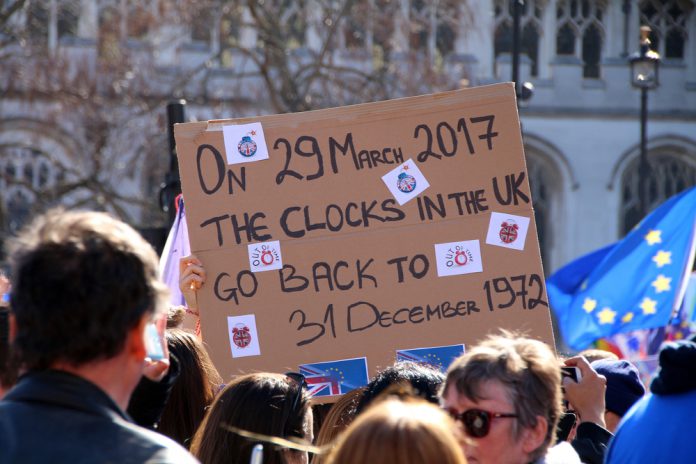
Today is the day: Theresa May will send a hand-signed letter to the President of the European Council Donald Tusk, and Brexit will begin.
So far, all the rhetoric has been focused on this moment. But what happens now?
Today
Theresa May’s letter will be taken to Brussels, where Tusk says he will present the EU’s initial response within 48 hours.
May will then conduct Prime Minister’s Question Time in Parliament, making a statement on Article 50. She has already declared intends to define a “new, positive and constructive partnership” between Britain and the European Union “by the time the two-year Article 50 process has concluded”.
However many believe that two years is far too short a time to negotiate fully everything that needs to be discussed, and questions of this type are likely to be put to May during Question Time.
During the next two years
From today, Theresa May and her team of negotiators – Brexit Secretary David Davis, Oliver Robbins, the permanent secretary at the Department for Exiting the EU, Sir Tim Barrow, the UK’s ambassador to Brussels, and his deputy Shan Morgan – will have two years to negotiate a deal for the UK’s exit, as well as a trade deal for the future relationship.
However, after pauses for elections (of which there are several upcoming in the European Union) as well as summer and Christmas holidays, the negotiation time is likely to be around 18 months.
Within the next few weeks Donald Tusk will arrange a special summit of the EU27, in which they will finalise their objectives for Brexit negotiations.
The first discussions to take place will be the Article 50 “divorce” talks, which will decide how Britain will leave the EU. One of the largest topics will be money – because the UK pays in so much, other states have to determine how to cope in the EU with less income, or who will pay more. It will also be decided how much the UK needs to pay to leave, stemming from a proportion of the loans it has been given by the EU over the years. It is likely to cost anything between €20 billion and €60 billion.
May wants to be able to discuss the UK’s future relationship with the EU simultaneously with divorce talks, but several other EU states have said they would prefer to do one, then the other. Divorce talks can be approved by a majority of the EU27, but the final Brexit deal – governing the UK’s future relationship – requires unanimous approval from all 27 countries.
What does May want in the future?
To use a popular expression, Theresa May wants to have her cake and eat it. She has frequently spoken of her desire to retain the “greatest possible access” to the single market through a free trade deal, as well as form of customs union agreement, but also gain back the UK’s border control and end the relationship with the European Court of Justice.
Unfortunately, many EU officials have said this is unlikely – freedom of movement is a prerequisite for access to the single market. EU member states are also more inclined to be tough on the UK to prevent other countries following suit out of the Union. All this means that May has some incredibly tough negotiations coming up – and a very short timescale in which to do them.
